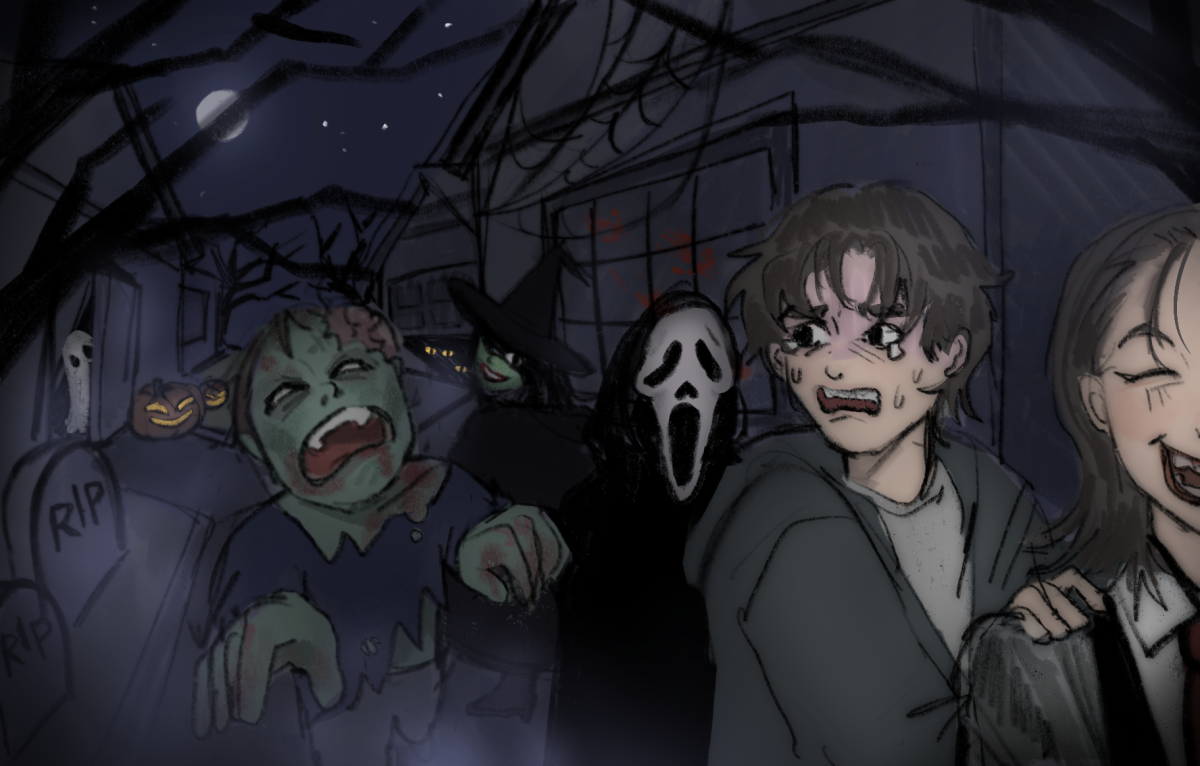For the older-than-is-socially-acceptable wimp, October is a constant stream of horror ads and jump-scare decorations. Even at school, both peers and faculty eagerly plan for the scariest night of the year: Halloween. Truly, a dreary time that drives the easily spooked weak and weary—feeling left out of the celebrations while frantically avoiding insensitive jumpscares, Halloween is a cruel, heartless holiday for us and no one seems to understand.
The idea that Halloween is just a children’s holiday is outdated in 2024 as horror media, haunted houses and events have become increasingly graphic. Psychology explains why humans seek out fear: the anticipation of a jumpscare releases adrenaline, which is the same hormone activated during a roller coaster ride or a sports game. This stimulation of both positive (excitement) and negative (fear) emotions creates a dissonance that can be an addicting experience for some, satisfying morbid human curiosity.
These reactions have the opposite effect on the smaller percentage of people who avoid stimulating media. Three obvious factors are anxiety, phobias and squeamishness: if someone already navigates day-to-day life with elevated levels of irrational fear, has an extreme aversion to a popular trope or has a weak stomach for all things gory, Halloween season would not be their favorite. But the lesser known reality for these that individuals is that with higher harm-avoidance temperaments and lower novelty-seeking tendencies tend to shy away from horror. People with high levels of empathy also find these experiences unpleasant, as they struggle to detach from the simulated situations.
However reasonable these factors sound on paper, it’s entirely another story trying to explain them to the thrill-seeking majority. Halloween is a uniquely cultural holiday with traditions such as trick-or-treating, haunted houses and themed fearsome events like Knotts’ Scary Farm and Universal Halloween Horror Nights, best enjoyed with friends—and the older you get, the more explicit, graphic and provocative they are.
Facing the awful teenage stages of peer pressure and bluffed bravery with guaranteed nightmares and heart palpitations behind them, horror haters are stuck between a rock and a hard place. Despite friends’ understanding and support, sitting at home on Halloween and scrolling through Instagram stories of theme parks and haunted houses feels humiliating when unable muster the courage to enjoy those experiences.
No matter how disappointed you may be that a cherished friend can’t join you on your spooky escapades, sending the “sorry, I can’t come, I’m too scared” text is even tougher. The toxicity of peer pressure in high school, especially as we gain more independence, is a serious issue. This Halloween, consider accepting your anti-horror loved ones and offering alternative plans, like a cozy movie night or pumpkin carving, even if they may seem a bit more childish. It’s not about maturity or wimpishness; it’s simply a difference in character




















































